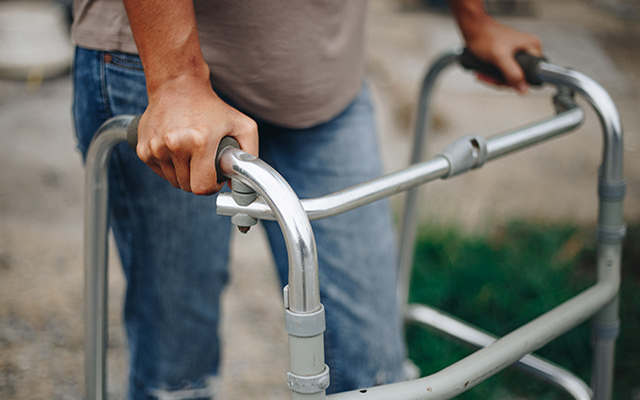During the early stages of the current pandemic, I happened to notice our next-door neighbor Bonnie hobbling sluggishly in her backyard. When I inquired, she mentioned that she was on a waiting list for a hip replacement. But with hospitals limiting all elective procedures, she wasn’t at all sure when the surgery might take place. She hoped it would be soon; the pain was pretty much constant.
Bucking a trend among the Medicare set, Bonnie was more than willing to face the specter of COVID-19 that hovered in every well-scrubbed hospital corridor. She knew there were risks, but the gamble would be worth it if she could exit with a pain-free functioning hip. “It’s pretty bad,” she said.
It would be a month or more before Minnesota’s governor would relax some restrictions and allow doctors to schedule Bonnie’s surgery. But it strikes me now as an ironic reminder of how the pandemic is changing our healthcare system — and why the results may not be as optimal as we may hope.
A trio of hopeful oncologists fired the latest salvo earlier this month, suggesting that COVID-19 offers a singular opportunity to reduce the volume of “low-value” procedures routinely foisted upon cancer patients. Writing in JAMA Oncology, Bishal Gyawali, MD, PhD, Bishesh Sharma Poudyal, MD, and Elizabeth Eisenhauer, MD, argue that the pandemic has ignited a fresh debate about the efficacy of current treatment protocols.
“The necessity to change, adapt, and innovate created by the COVID-19 pandemic may yield a more lasting series of changes that can help address overstretched, costly, and at times inefficient cancer-care systems,” they write. “Decisions made during this period will be an opportunity to identify and discourage low-value practices in oncology.”
Without explaining why “low-value practices” were happily accepted prior to the arrival of the novel coronavirus, the authors applaud their colleagues for suddenly “focusing on those [practices] that clearly improve outcomes in a meaningful way that justify the increased risks to patients of coming to hospitals to receive treatment.”
Some oncologists have even stopped prescribing ineffective medications, they note. Others have begun to question the necessity of mammograms and other cancer-screening protocols. “We argue that we need to take it a step further . . . and consider if we should do it even if there is no pandemic,” Gyawali and his colleagues note. “We believe this is an opportunity to choose wisely, be thoughtful, and critically appraise the evidence for everything we do as physicians.”
You’ll have to excuse my cynicism, but if it takes a global death-dealing pandemic to persuade doctors to practice their profession with the health of their patients in mind, our healthcare system is probably beyond repair. But that’s not how Ezekiel Emanuel, MD, and Amol Navathe, MD, view the situation. Codirectors of the University of Pennsylvania’s Healthcare Transformation Institute, they believe the changes wrought by COVID-19 may end up saving the American healthcare system — if lawmakers push for a few simple changes.
Writing in the New York Times, Emanuel and Navathe also cite the salutary effects of fewer “low-value medications, laboratory tests, prenatal interventions, and diagnostic and surgical procedures” during the pandemic. But they dig deeper, pointing to the rise of cost-effective telemedicine and new policies that limit inpatient hospital care to only the sickest patients.
“Treatment for chronic conditions, such as heart failure, pneumonia, and emphysema, has been slowly moving from doctors seeing patients in hospitals, to visiting nurses caring for patients at home,” they note. “In general, patients treated at home recover faster, with fewer tests, fewer readmissions, and higher satisfaction. And care in the home typically costs less than care in hospitals. COVID-19 has shown that even more patients can be treated well without being hospitalized.”
But here’s the rub: Most of the procedures the pandemic has rendered “unnecessary” also happen to be quite lucrative for the healthcare system. That’s why so many hospitals are going broke and why many physicians may eventually quit their private practice and sign on with giant healthcare companies. And unless Congress makes specific legislative changes, you can bet the post-pandemic healthcare system will quickly revert to its former ways.
To protect physicians as they shift their approach, Emanuel and Navathe suggest three specific federal policy strategies:
- Support doctors who remain in their independent practices by making the accelerated Medicare payments part of the federal bailout program grants rather than loans.
- Reimburse virtual patient visits at the same rate as office visits.
- Stabilize a physician’s revenue with a $200 payment per Medicare and Medicaid patient if the doctor adopts a fee-per-patient system rather than the current fee-per-service model. Physicians would also be required to offer virtual visits, extend their office hours, and offer mental-health screenings.
Government can push hospitals toward a post-COVID-19 future, they argue, with these policy shifts:
- Require that Medicare reassess its reimbursements for the most popular elective procedures. Hospitals love these often-unnecessary treatments and tests because the government pays them more than the cost of the service.
- Demand that hospitals offer home-care options for all low-risk patients.
- Establish “site-neutral” Medicare payments, making reimbursement the same regardless of whether the procedure was performed in the hospital or at a remote clinic. Emanuel and Navathe note that an identical procedure can cost as much as 10 times more when performed in a hospital than in a clinic.
“We have a chance to harness the progress that the pandemic has engendered for the long-term sustainability of the health system,” they conclude. “If we do so, as we look back upon 2020 in years to come, perhaps we will recount how COVID-19 saved medicine.”
Call me cautiously pessimistic. Barring the unlikely possibility that Congress emerges from the pandemic with a sudden immunity to what will surely be a resurgent lobbying effort on the part of the medical-pharmaceutical complex, I can’t imagine any post-COVID-19 world that includes a radical rethinking of our healthcare system. There’s simply too much money to be made from unnecessary tests, screenings, and preventive surgeries. Low-value procedures are clearly highly valued by the industry.
And even if the government could coax some major reforms from the system in the pandemic’s wake, I’m not at all sure I’m ready to embrace the sort of healthcare rationing we’re seeing now. Policymaking tends to become more personal when the results affect real people.
I spied my neighbor Bonnie hunched over a walker the other day, giving her new hip a test drive on the sidewalk in front of our house. “She’s doing great,” her husband reported across the back fence later. “No pain at all.”
This was not only good news for my septuagenarian neighbors, but it offered a cautionary tale for those of us who like to raise a stink about our expensive and inefficient healthcare system. Whatever brave new postpandemic system emerges, only the heartless would cheer one that demands an interminable wait for a procedure that would ease the pain of the grandma next door.




This Post Has 0 Comments